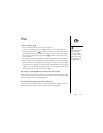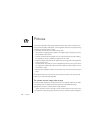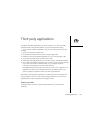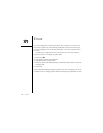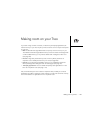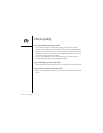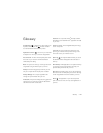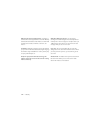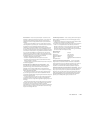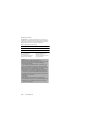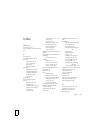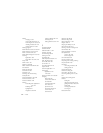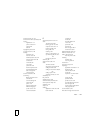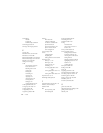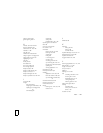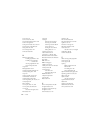FCC Statement :: 159
FCC Statement This device complies with part 15 of the FCC rules.
Operation is subject to the following two conditions: (1) This device may
not cause harmful interference, and (2) this device must accept any
interference received, including interference that may cause undesired
operation.
This device has been tested and found to comply with the limits for a
Class B digital device, pursuant to part 15 of the FCC Rules. These limits
are designed to provide reasonable protection against harmful
interference in a residential installation. This equipment generates, uses,
and can radiate radio frequency energy and, if not installed and used in
accordance with the instructions, may cause harmful interference to radio
communications. However, there is no guarantee that interference will not
occur in a particular installation. If this equipment does cause harmful
interference to radio or television reception, which can be determined by
turning the equipment off and on, the user is encouraged to try to correct
the interference by one or more of the following measures:
• Reorient or relocate the receiving antenna
• Increase the separation between the equipment and receiver
• Connect the equipment into an outlet or circuit different from that to
which the receiver is connected
Consult the dealer or an experienced radio/TV technician for help and
for additional suggestions.
RF Safety Exposure To Radio Frequency Energy (SAR) Radio
transmitting devices radiate Radio Frequency (RF) energy during its
operation. RF energy can be absorbed into the human body and
potentially can cause adverse health effects if excessive levels are
absorbed. The unit of measurement for human exposure to RF energy is
“Specific Absorption Rate” (SAR).
The Federal Communications Commission (FCC), Industrie Canada
(IC), and other agencies around the world have established limits that
incorporate a substantial safety margin designed to assure the safety of all
persons using this equipment.
In order to certify this unit for sale in the US, Canada and Europe this
unit has been tested for RF exposure compliance at a qualified test
laboratory and found to comply with the regulations regarding exposure to
RF Energy.
SAR was measured with the unit transmitting at its maximum certified
RF power. Often, however, during normal operation the unit will transmit
much less than maximum power. Transmit power is controlled
automatically and, in general is reduced as you get closer to a cellular base
station. This reduction in transmit power will result in a lower RF energy
exposure and resulting SAR value.
FCC RF Safety Statement In order to comply with FCC RF exposure
safety guidelines, users MUST use one of the following types of body-
worn accessories.
1. A palmOne brand body-worn accessory that has been tested for SAR
compliance and is intended for use with this product.
2. An accessory that contains NO metal (snaps, clips, etc) and provides AT
LEAST 1 cm of separation between the users body and the unit.
Do NOT use the device in a manner such that it is in direct contact with
the body (i.e. on the lap or in a breast pocket). Such use will likely
exceed FCC RF safety exposure limits See www.fcc.gov/oet/rfsafety/
for more information on RF exposure safety.
Responsible party
(North America) (Europe)
palmOne, Inc. Vesey Chrichton
400 N. McCarthy Blvd. Buckhurst Court
Milpitas, CA 95035 London Road
USA Wokingham, Berkshire RG40 1PA,
www.palmOne.com UK
Antenna Care/Unauthorized Modifications Use only the supplied
integral antenna. Unauthorized antenna modifications or attachments
could damage the unit and may violate FCC regulations. Any changes or
modifications not expressly approved by the party responsible for
compliance could void the user’s authority to operate the equipment.
Potentially Unsafe Areas / Potentially explosive atmospheres Obey all
signs and instructions regarding turning off your phone. In particular, turn
off your phone when you are in any areas with a potentially explosive
atmosphere, such as fueling areas (gas or petrol stations, below deck on
boats), storage facilities for fuel or chemicals, blasting areas and areas
near electrical blasting caps, and areas where there are chemicals or
particles (such as metal powders, grains, and dust) in the air.



